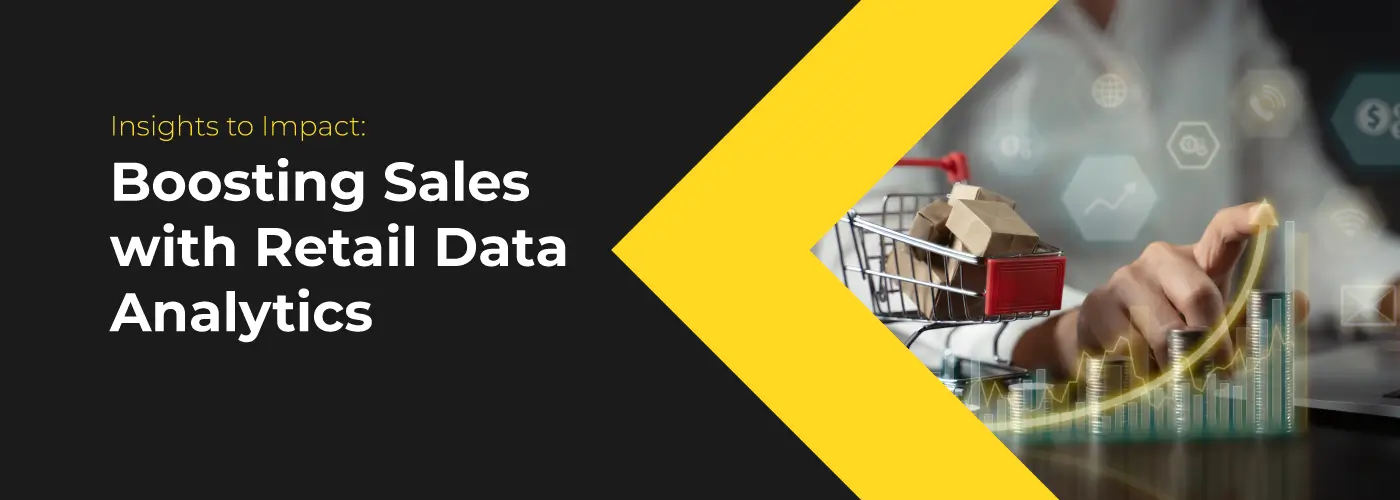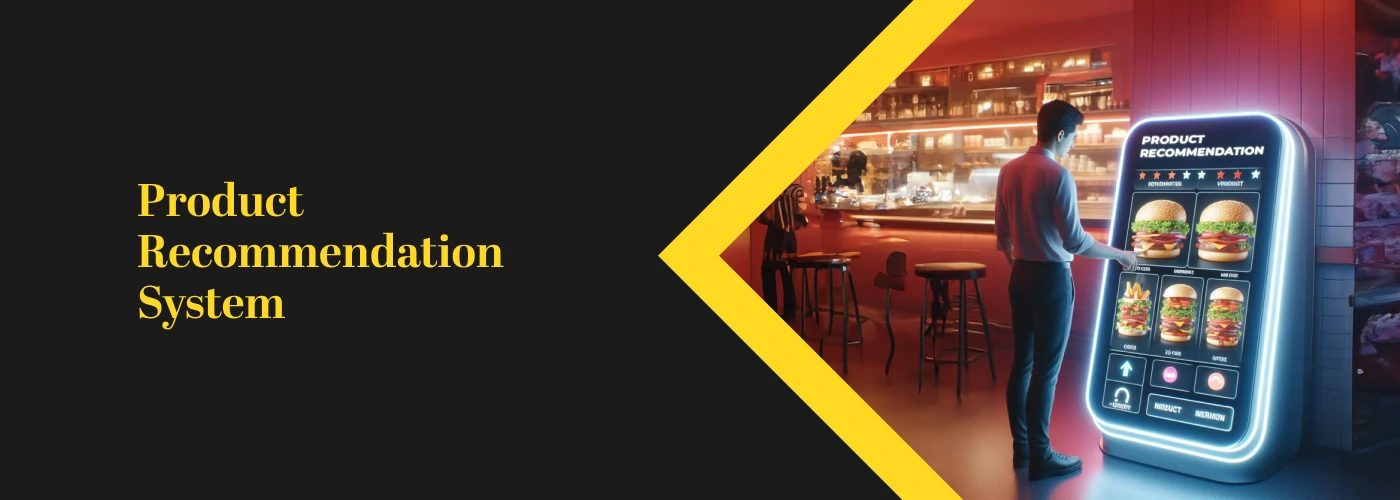Last Updated : 04-April-2024
Editor’s note: With the retail landscape moving from brick-and-mortar to omnichannel, O2O, and more – the impact that data analytics insights can bring should be re-strategized by companies. With this article, we bring the impact and benefits that retail data analytics can bring to brands.
Introduction
By now we all know that once slow-influencing and driven by intuition, data analytics for retail industry has now become a game-changer. As we move towards increasingly data-powered environments, assuming that just dipping toes in the data & analytics pool will address all your business challenges is not a wise proposition. After all, the data you’re sitting on has the ability to give your business a competitive advantage. Hence, to make effective use of data, you need to have a powerful data engine that quantifies the actions and differentiates growth champions from the rest.
With this in mind, let’s first understand retail analytics and how it helps businesses. Let’s take a look at retail data and how retail data analytics help companies identify the most promising prospects and compete better in the market.
Jumpstarting Business Value Creation with Retail Data Analytics
To define in a simple language, retail data is a collection of information that quantifies business actions. The diversified range of retail data includes operational data, sales data, consumer data, inventory data, etc. As with any other information, data needs to be collected, processed, and evaluated to take necessary action - and this is when retail analytics comes to light.
Retail analytics leverages retail data and unlocks its true power. By providing retail insights into hidden patterns, it delivers significant improvements across different verticals like operations, inventory management, sales, supply chain management, and customer experience.
Empowering the Seller: Employing Data Analytics for Retail Industry
Retail analytics has become a revolution, and the numbers speak for themselves. The 4%-5% sales growth, 15%-25% improvement in cost-effectiveness, and 30% digital sales boost through marketing and personalization are just a glimpse of the potential it holds.
McKinsey’s segment specific research highlights the potential of retail analytics in solving operational problem and uncovering opportunities.
To date, however, these analytics have been highly siloed within different business areas - such as planning and marketing - with little coordination or information sharing across business areas. With data analytics influencing so many business areas, it can be challenging for retail companies to thoughtfully invest in building their capabilities.
To effectively enhance data analytics capabilities, retail players primarily need to decide where analytics will achieve the business impact. They should develop a cross-functional roadmap and examine every aspect of their operations to spot challenges, unlock growth opportunities, and fully optimize data analytics investments.
Benefits of Retail Analytics Solutions
Understanding Customer Behavior: Customers today are unforgiving. Non-traditional competitors have set the bar high for digitally engaging, personalized experiences. Lacking basic omnichannel capabilities (e.g., pick-up in store; online store inventory check) or even more advanced marketing campaign personalization (e.g., based on demographic and behavioural attributes) will lead to missed expectations, unsatisfied customers and ultimately, lost sales.
This is where the data makes the difference. Now data is accessible at nearly every touchpoint that consumer and retails interact nowadays – including both online and offline. In the opaque of changing customer behaviour, using customer analytics acts as a window to your customer preferences, journey, and behaviour.
By analysing customer data, you can understand how they respond to different tactics. Think of customer analytics as a business for connecting with the target audience. It gives organizations direct insight into the customers' behaviours and patterns, allowing them to deliver content, communications, and solutions that meet the precise needs better than competitors.
By doing so organizations can improve their strategies, which can help them grow their sales by not solely relaying on extensive marketing campaign but with relatively minor changes that cater to the audience. And this is not just another fad - McKinsey reveals companies using customer analytics double their profit growth compared to competitors.
In other words, by making investments in customer analytics, you put yourself ahead of the curve - the better you know and understand your customers (their preferred choices, their buying habits, and the offers that they respond to), the more precisely you will be able to draw predictions regarding their future buying behaviour and patterns. This way, retailers can estimate sales potential and rank SKUs per department. Additionally, you can personalize your service offerings and orchestrate the most fulfilling customer journey.
Effective Inventory Management: Effective inventory management can be notoriously tricky at times in the retail sector. We all know the struggle – keeping the right amount of stock on hand to meet fluctuating customer demand without getting stuck with dead stock or facing stockouts.
When $740 billion in unsold goods sits with retailers in the United States alone, the impact on sales is an obvious outcome.
While some retailers have struggled at maintaining inventory, others have leveraged retail data analytics to deconstruct obstacles and ensure the factory-to-shelf journey is effective and insightful. While basic analytical methods are essential for mitigating issues in short term, and might give you outputs, but a reactive strategy can prevent retail from building the necessary tools, processes, and organizational capabilities to tackle similar disruption in the future.
The good news is now the retailers are adopting actions including retail analytics across dimensions to optimize availability and inventory. Here’s how:
| Dimension | Short term | Long term |
|---|---|---|
| End to end visibility and collaboration |
|
|
| Segmented approach to inventory optimization |
|
|
| Effective forecasting, planning and inventory(re)deployment |
|
|
Data & analytics enable retailers to stay ahead of the supply-demand curve by aligning channels to opportunities based on various factors and generating remarkable results.
Cost Optimization: Cost is the most fundamental element of any pricing decision, and it stands as the first C of pricing and for a good reason. You can’t determine a profitable price point without a clear understanding of what it costs to produce and sell your products/services. Therefore, optimizing cost is vital for several reasons.
According to Deloitte with a pricing solution optimizing costs can lead to an immediate margin performance improvement of 2%-4% and a sales growth of 1%-2%.
Hence deploying pricing analytics allows retail companies to maximize ROI at the customer level across different touchpoints on the buying journey.
Cost optimization is a multi-pronged approach which strategically leverages data and various techniques to reduce expenses while maintaining a competitive edge. With efficient inventory management, enriched customer experience, and capitalization on timely opportunities, retail analytics help businesses optimize costs in many ways. From launching a marketing or sales strategy, streamlining operational tasks, or managing stock at warehouses - retail leaders will find themselves steering their sales force in a way that will positively impact the bottom line.
Trade promotion optimization: Despite rising budget, many promotions remain ineffective. Issues like lack of transparency due to inherent complexities and manual manipulation of data, inconsistent implementation due to difficulty in linking the impact of promotional spend to revenue and lack of collaboration between manufacturers, retailers and distribution contribute to the situations where many promotions are ineffective, despite increasing spending on them.
Both manufacturers and retailers agree that many promotions are ineffective. This has gone on for decades and spending on promotions has increased over time
This makes data-driven promotions crucial for avoiding this sweet-but-sour situation.
- How to effectively allocate promotion spending
- Trade promotion management framework
- KPIs to track
- Best practices promotion management process

By implementing retail analytics platforms and fostering collaborative data sharing, retailers can gain crucial insights into promotion effectiveness. By doing so you:
10%-20% sales boost by discovering who responds best to promotions and target the right customer.
McKinseyPrevent 15-20% lost sales by minimize cannibalization.
Accuris15-20% increase in promotion effectiveness by easily sharing data to co create promotions that address customer needs
Promotion optimization instituteDecision-making: Winning in the Retail Industry
Effective retail decisions depend on streamlined processes, productive meetings, and clear KPIs within departments. This makes sure that everyone is in agreement and working towards shared goals of growth and financial prosperity. Companies that succeed in addressing the growth and profitability paradox prioritize on right KPIs and enable effective collaboration among different decision-makers and stakeholders.
Get tangible insights into your sales strategies. Find out KPIs to refine your approach for optimized sales outcomes. Measure the effectiveness and overall business performance.
Get InsightsFocus on KPIs: Make the Most Out of Retail Data Analytics
What can’t be measured, can’t be manage. By now we understand the benefits of retail analytics. But it's equally important to see if it works or not.
Leaving such essential KPIs untapped leave value on the table. Make sure you don’t miss out on them to extract the most out of retail analytics:
KPIs provide you with a detailed picture of how your retail business performing. Now that you know the types of KPIs for your retail business, you can keep track of growth. And now that you can measure business performance with metrics, you can improve it. Are you ready to kick-start analyzing your data and setting the right business goals?
Polestar Solutions: Enabling Smart Business Decisions
No matter which metric you use, retail data is only useful when used effectively. Data is a critical business asset and Polestar Solutions helps you capture the full value of your data by implementing broad-based analytics, novel technologies, and industry best practices.
Polestar Solutions helps you become a future-forward retailer by doing a quick data analysis that will often surface the best suitable options to begin with, though additional work may be required to assess tricker security issues. So, what are you waiting for?
You are ready to become a DATA-DRIVEN + INSIGHT DRIVEN organization. Book a session with us today!



